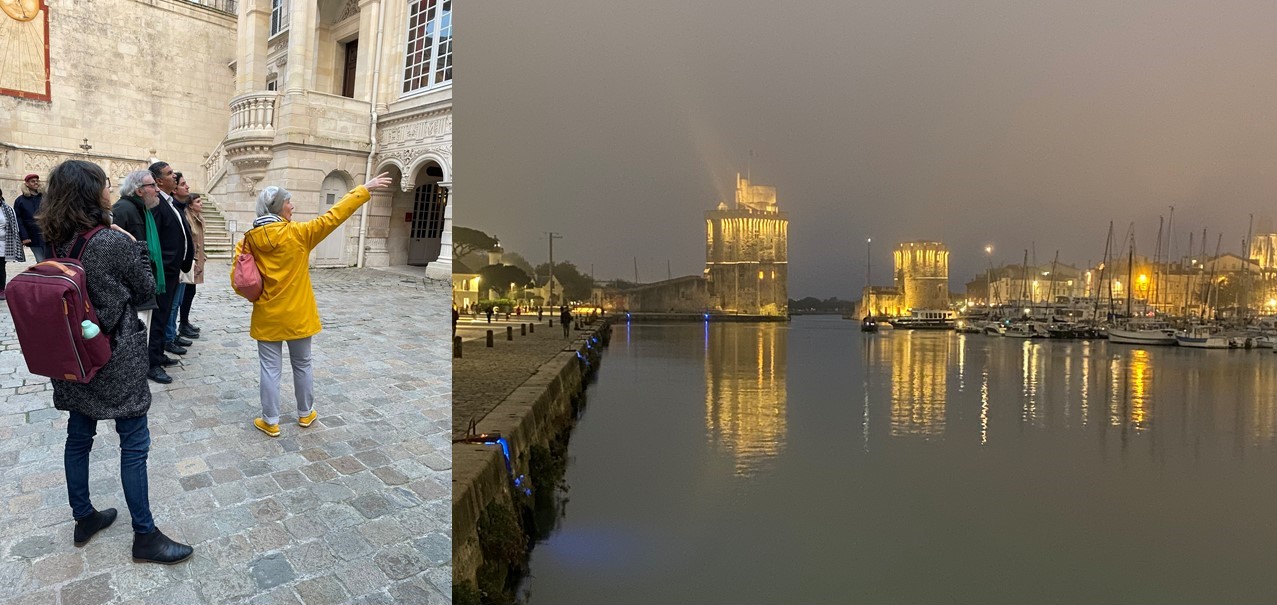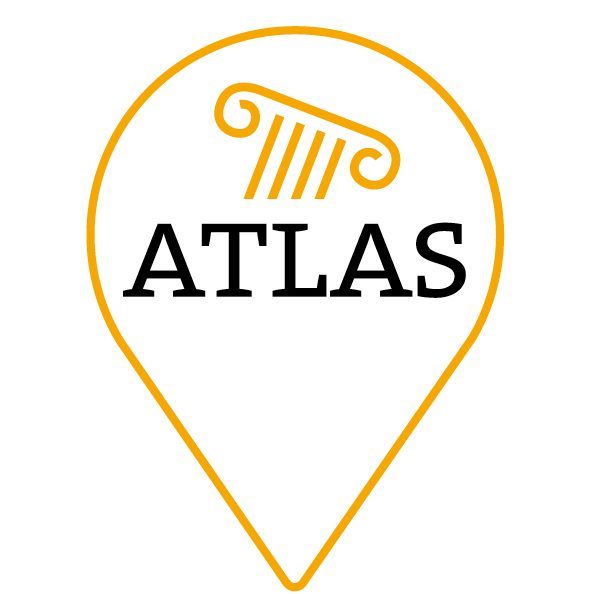Every year the members of the project meet in one of the research centres. After Madrid and Hamburg it was time to go to La Rochelle. For the directors and postdocs a happy return to a different city with people and restaurants: our last visit to start the project and WebGIS was mid-pandemic. Our workshops are hybrid allowing the members to plan it in their busy schedules. Luckily several members participated in person to present the group work. As we started on Wednesday morning those participants arrived on Tuesday. This early arrival of most participants led to an accidental unofficial project dinner where we were able to enjoy getting together again and sharing some good pizzas.
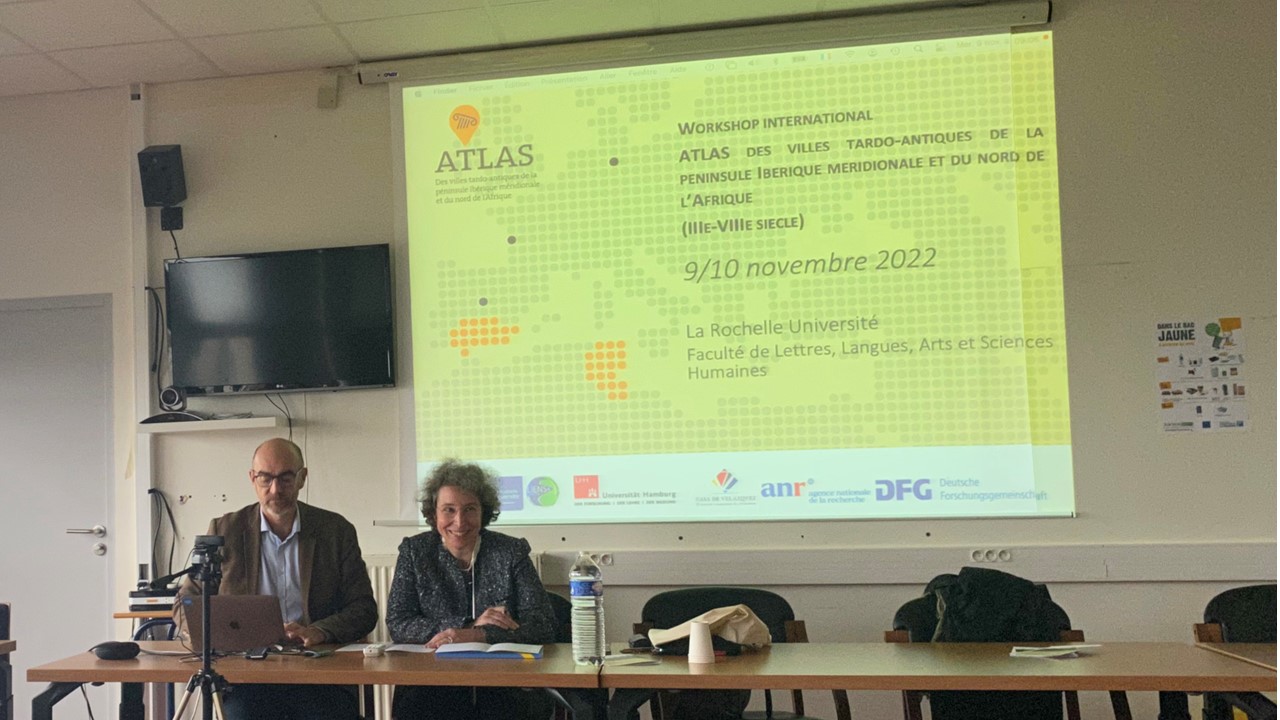
Wednesday November 9th
The first day of the workshop started early with a welcome by our directors Sabine Panzram and Laurent Brassous (who organised the whole Workshop). Their introduction gave an overview of the work done so far and, more importantly, the work that needs to be done. The project will lead to the publication of a companion where we have collected the research we have carried out over the years. The deadline for the manuscripts of each research group is the 1st of december. As our next meeting is early May 2023 in Tunis, it looks like it might become the best venue to present our first drafts for the companion. The final meeting will be in April 2024 in the Casa de Velázquez in Madrid. After these important household announcements it was time to start the presentations and discussions.
The first research group to present was Terminology and Political power, they started with an introduction by Rubén Olmo (Universidad de Oviedo). He explained that the former two groups Terminology and Political power were composed of almost the same people and were researching the same topics. Hence they decided to merge the groups into one. Their focus will be on the ideas behind the definition of the city, and its relations with imperial, and religious powers in Late Antiquity. The first presentation of this group was given by Álex Corona (Universidad de Valladolid) on the role of bishops beyond the religious. He argues that over time bishops tended to take more profane roles upon themselves and so controlled jurisdiction and administration of cities. Stéphanie Guédon (Université de Limoges) continues with the changing social and cultural affiliations in the region of Sufetula. She shows that the affiliation to an urban community found in imperial funerary epigraphy changes to a christian affiliation.

The Territory group presented by Fred Hirt (University of Liverpool) and Pieter Houten (Universität Hamburg) the territories of two mining cities among our case studies: Simitthus and Carthago Nova. As the available data for these two case studies is very different, the presentation was conceived as two separate sections. Whereas Simitthus saw a revival of quarrying in Late antiquity, the mining of Carthago Nova ended already in the second century and never returned. However, thanks to a recent survey of the hinterland of Carthago Nova we can reconstruct the dynamics of this region. Despite the limited work done in the territory of Simitthus, it is possible to reconstruct some of the dynamics through the epigraphic data.

Ada Lasheras (EHEHI – Casa de Velázquez) who presented the work on the Eighth Century. This time, the group carried out an in depth study on the data available on this century in each of the ATLAS case study cities. Despite what one might think a priori, the group’s presentation showed a remarkable amount of information, mainly of an archaeological nature. It is equally true, however, that there are very marked differences according to regions and specific cities, showing not only different urban evolutions but also the need for further research and excavations, especially in the North African area.

After this inspiring morning with quite some fundamental discussions on urbanism in Late Antiquity, we moved to the harbour of La Rochelle for lunch. Those positioned at the windows had some beautiful views to go with the fresh seafood on the plates. The dinner conversations varied from scientific discussions to trivia. All refreshed and recharged we could continue the Workshop.

The Epigraphy group got the task to battle the after dinner dip. They played their best card by having Javier Arce (Université de Lille) give a magisterial talk on the Comentiolus inscription from Carthago Nova. It is always interesting to see how one text can open up debates on the presence of troops, the position of Carthago Nova as capital (or not) and the reorganisation of the territories. Thereafter Pieter Houten (Universität Hamburg) presented the work of the epigraphy group on building inscriptions. They propose to extend the definition of building inscriptions to include those commemorating the sacralization of a church. Taking this one step further they proposed to place caritas in line of euergetism.
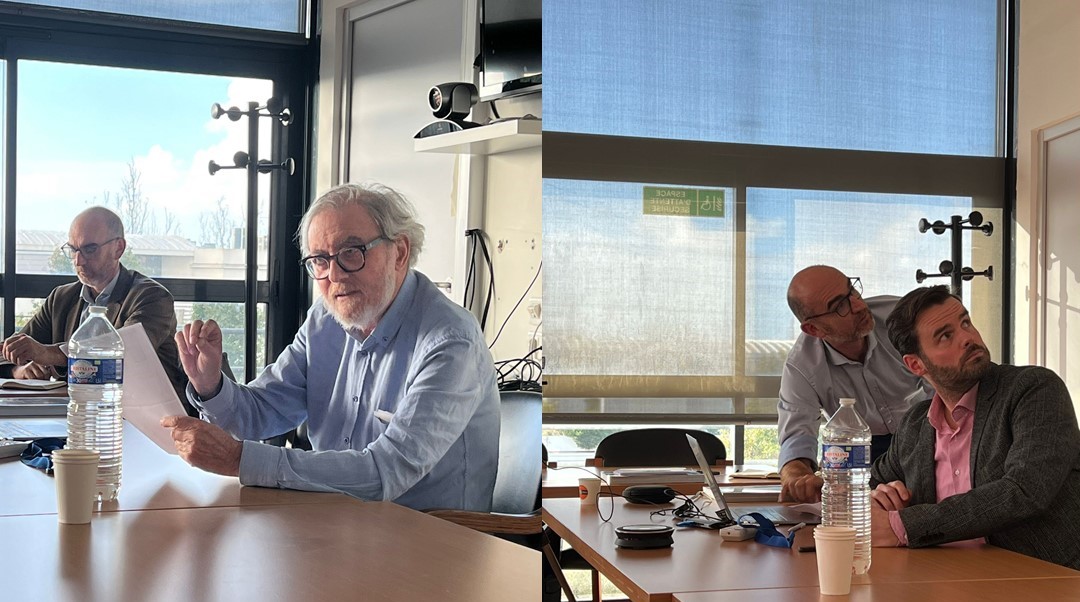
Laurent Brassous presented the work of the largest research group, Urban spaces, on houses in Late Antiquity, for which we have a wealth of information. He started with a short survey of the bibliography on housing, even though we can see this rise in interest, the research tends to focus on specific areas. Northern Africa seems to be ignored so far. Here ATLAS can take an important place to put housing on the map.

After a short coffee break we turn to the guest presentations allowing to compare our work to that done in Gaul. Marc Heijmans (Centre Camille Jullian) gives us an overview of the urban development in southern Gaul. He shows the different urban elements we can find in cities, such as walled perimeters. The subsequent presentation by Didier Bayard (INRAP) was mostly focussed on the urban walls, as he concentrated his paper on the recent publication: Villes et fortifications de l’Antiquité tardive dans le nord de la Gaule. The joined presentations gave a good overview of the urban development of Gaul in Late Antiquity.

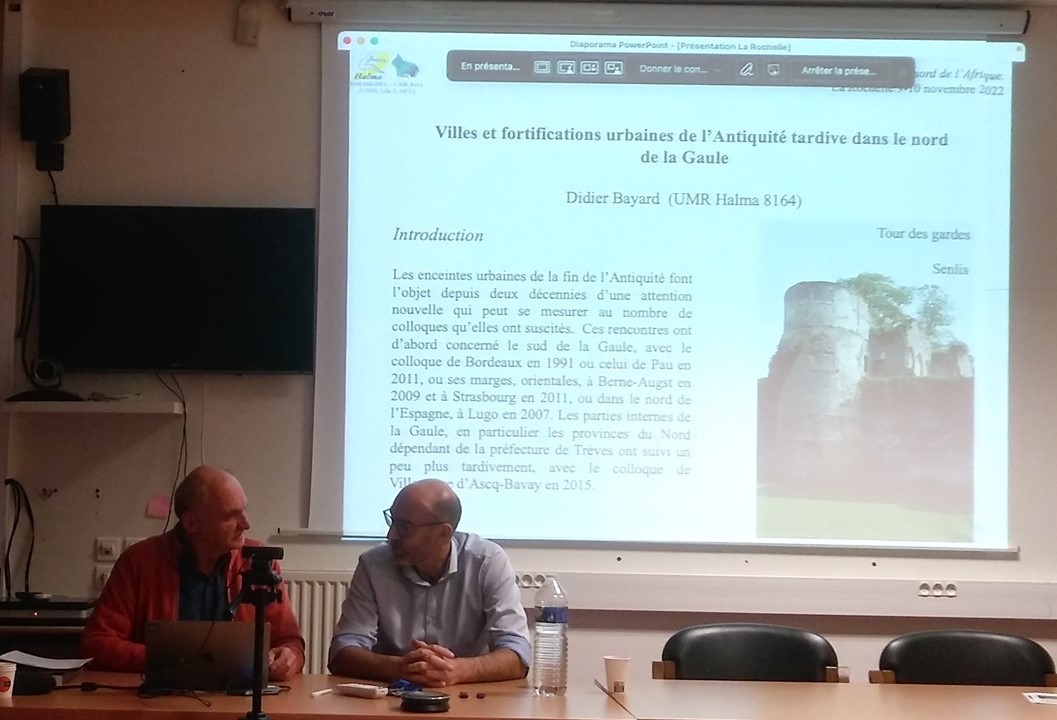
After the long first day it was time to conclude the day by a dinner in the city. As we had some time between the end of the presentations and the start of the dinner, some decided to take a quick nap, others strolled around the city to enjoy the lighted facades of the harbour and a few decided to enjoy some local beers on the terrace of the restaurant. The dinner in Prao with fresh local ingredients was amazing. The table conversations shifted between continued discussions on Late Antiquity and the trivials of food and wine pairing. For some the evening couldn’t come to an early end and they were stranded in an Irish pub for a nightcap.

Thursday November 10th
Thursday morning we had the last sessions on the methodology of our different project objectives. We started with the webGIS presented by our post-docs Ada Lasheras (Casa de Velázquez) and Pieter Houten (Universität Hamburg). They showed the interface of the webGIS and explained their workflow. More importantly, they drew the attention to the open part of the webGIS, where people can see the work done. This allows experts to check our work and notify us of incomplete, missed or even erroneous entries. The discussion on the functionalities of the webGIS was very helpful and will lead to changes so we have more search possibilities.
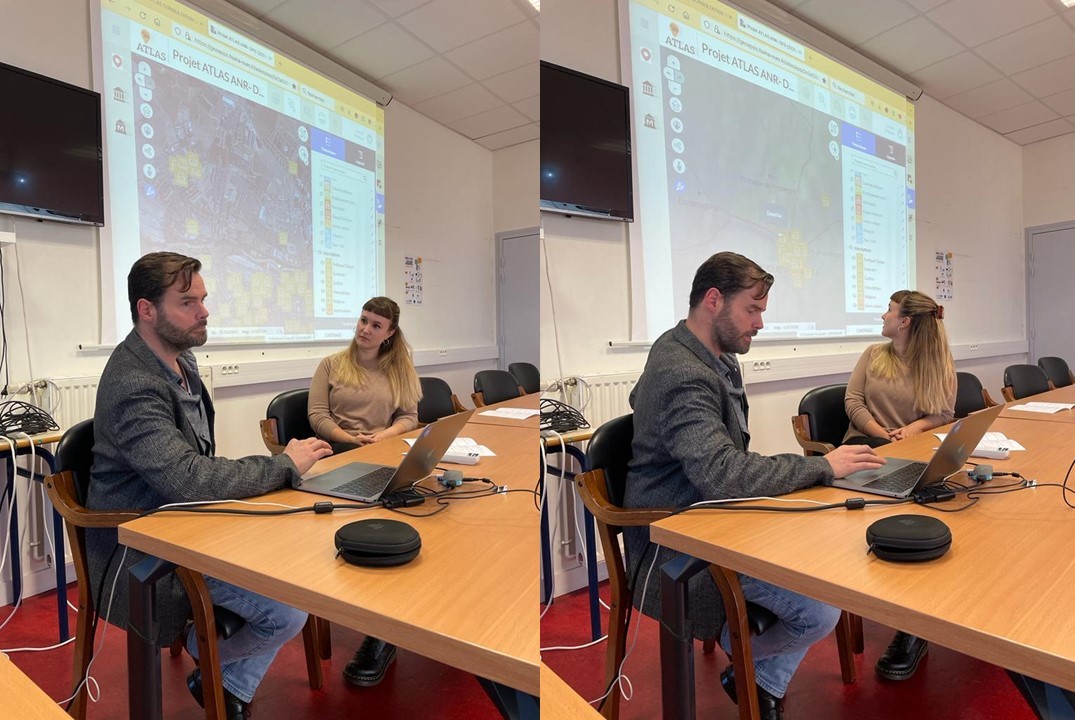
When you are called ATLAS, you should also engage with other atlas projects. Marc Heijmans presented the results of the Atlas topographique des villes de gaule méridionale. The massive tomes of Arles and Frejus he brought along to demonstrate the work done, created sparkles of joy in many eyes. We are like magpies with shiny things when seeing beautiful books. The Atlas series is well made and provides detailed information and maps on the city it focuses on. Even though our atlas will be an online WebGIS, some elements might be adopted into the companion that will be published at the end of the project.
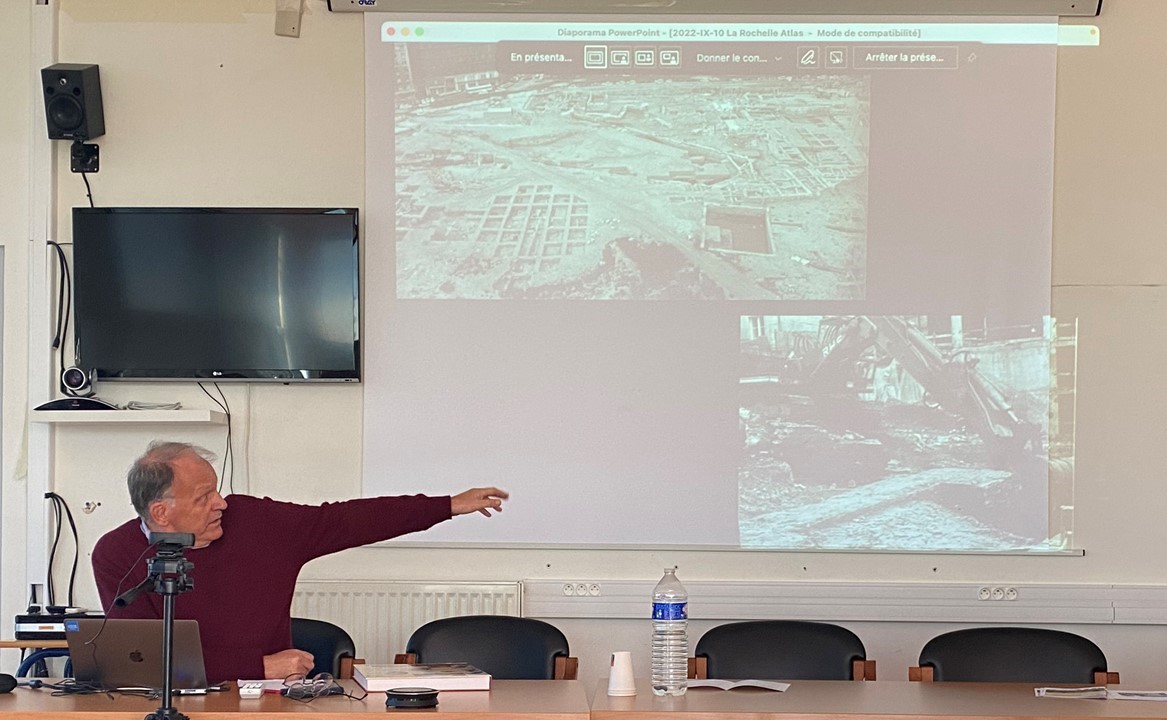
Our new colleague Titien Bartette (LIENSs) presented the methodology and progress of the 3D reconstruction for our travelling exhibition. Unfortunately Jean-François Bernard (CRAA) could not be present. Titien presented the case study of Baelo Claudia and how he worked to create a 3D reconstruction of the church at the site of Silla del Papa. It is great to see how the information provided in the webGIS combined with the expertise of Titien leads to a 3D reconstruction of the church. Each snippet of information is used to get to a reconstruction as close as possible to the historic reality. Each decision taken is founded in the archaeology of the site.

Some unfortunate members had to leave immediately after the end of the programme to catch the train to Paris. And so missed out on the leisurely afternoon programme. After enjoying an excellent meal at the Aquarium restaurant, Laurent had organised a guided tour of the city, which gave us a good insight into the history of La Rochelle, a major port enclave that often had to defend its autonomy. Afterwards, we still had some time to do some shopping and stroll around admiring the magnificent views of the harbour lit up in the mist at sunset. Finally, we enjoyed a lively dinner all together at Bar André, where some dared to try a wide assortment of seafood speciality of the house and others indulged in the dessert, renowned since then: rumbabá!
